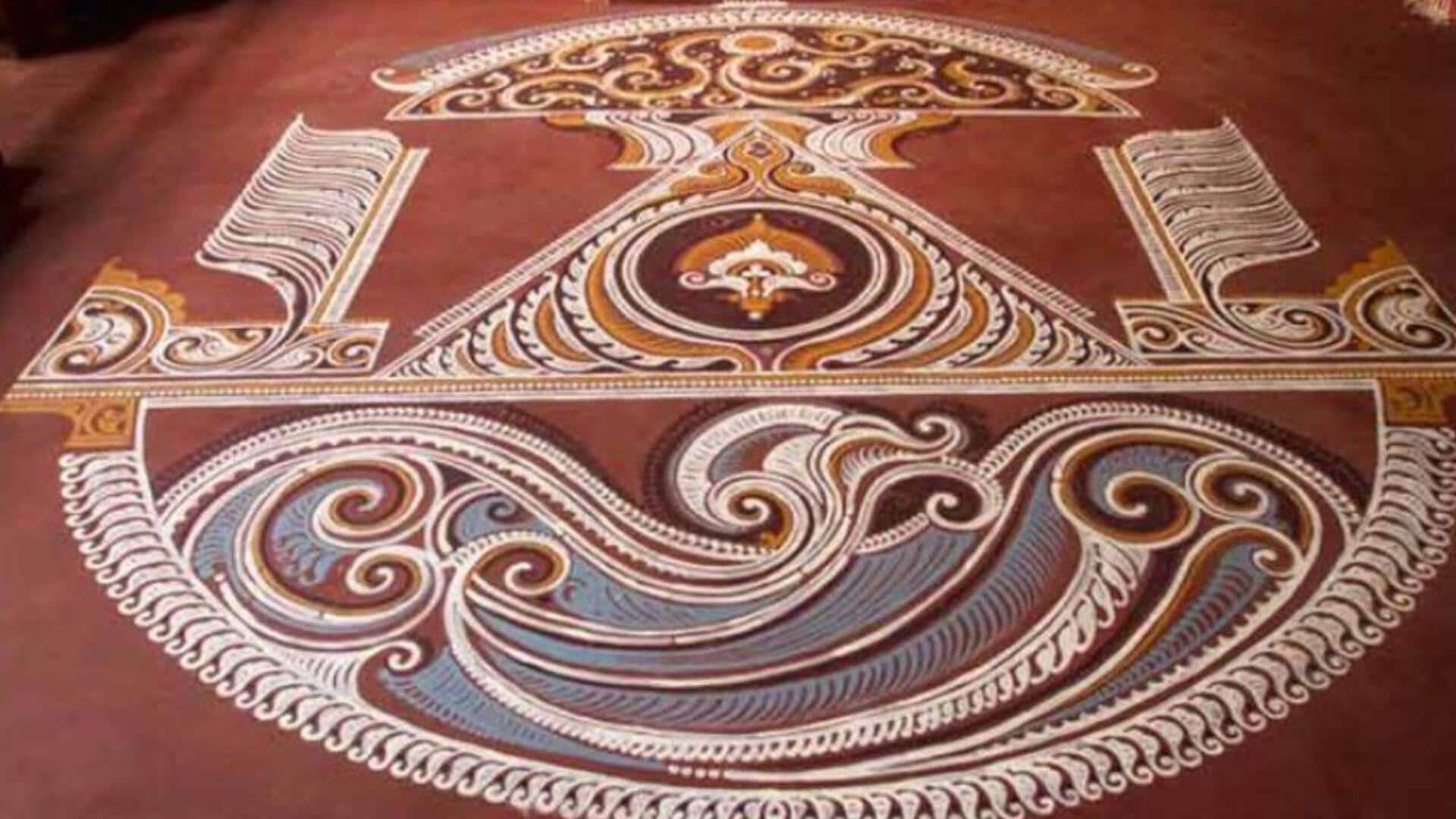
Alpona art: The timeless Bengali tradition you need to know
What's the story
Alpona art is a traditional Bengali practice of decorating floors with intricate designs. This centuries-old custom is especially popular during festivals and special occasions, where it is used to welcome guests and bring good fortune. Using rice paste or chalk, artisans create delicate patterns that vary from simple motifs to elaborate scenes. Alpona art is not just an aesthetic but also a cultural expression, showcasing the rich heritage of Bengal.
#1
Historical roots of Alpona
Alpona has been an integral part of Bengali culture for centuries. The art form is believed to have originated in rural Bengal, where it was used to adorn homes during festivals like Durga Puja and Poila Baisakh. Over time, Alpona became a symbol of hospitality and prosperity. The designs often reflect nature, mythology, or daily life, making each creation unique.
#2
Materials used in alpona creation
Traditionally, Alpona is made using rice paste mixed with water to form a thick consistency. This mixture is applied to the floor or walls using fingers or brushes to create intricate patterns. In some cases, natural dyes are added for color. The simplicity of materials highlights the accessibility of this art form, while allowing for creativity.
#3
Techniques involved in Alpona art
Creating Alpona requires skill and precision. Artists often start by outlining the design with a thin line of paste before filling it in with more detail. Repeated patterns are common, as they symbolize continuity and harmony. Some artisans also incorporate three-dimensional effects by layering paste or using different textures.
#4
Modern adaptations of alpona
While traditional Alpona continues to be cherished during festivals, modern adaptations have made their way into contemporary art scenes. Some artists experiment with digital versions or incorporate Alpona motifs into textiles and home decor items. This evolution showcases the versatility of the art form while preserving its cultural significance.